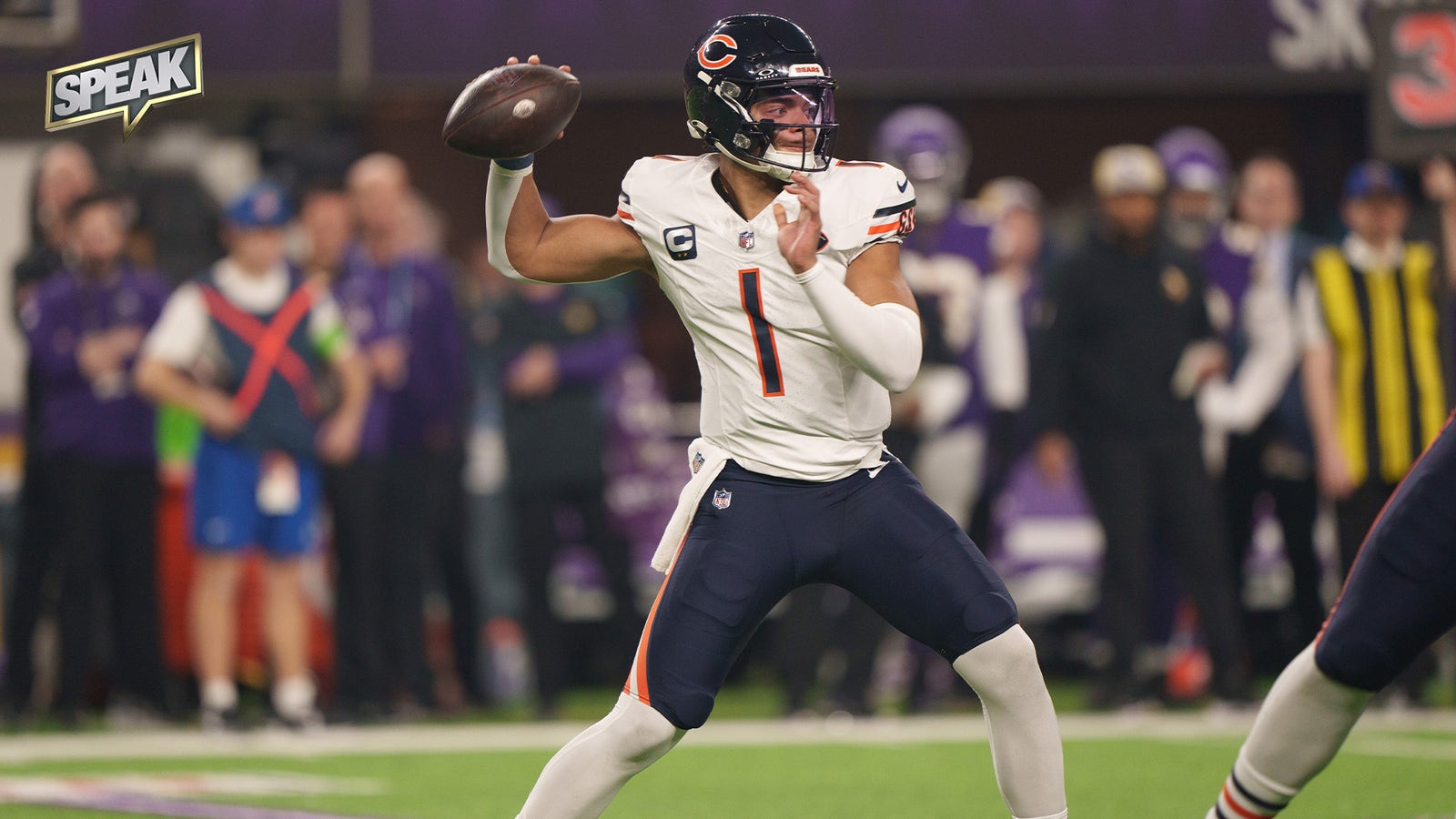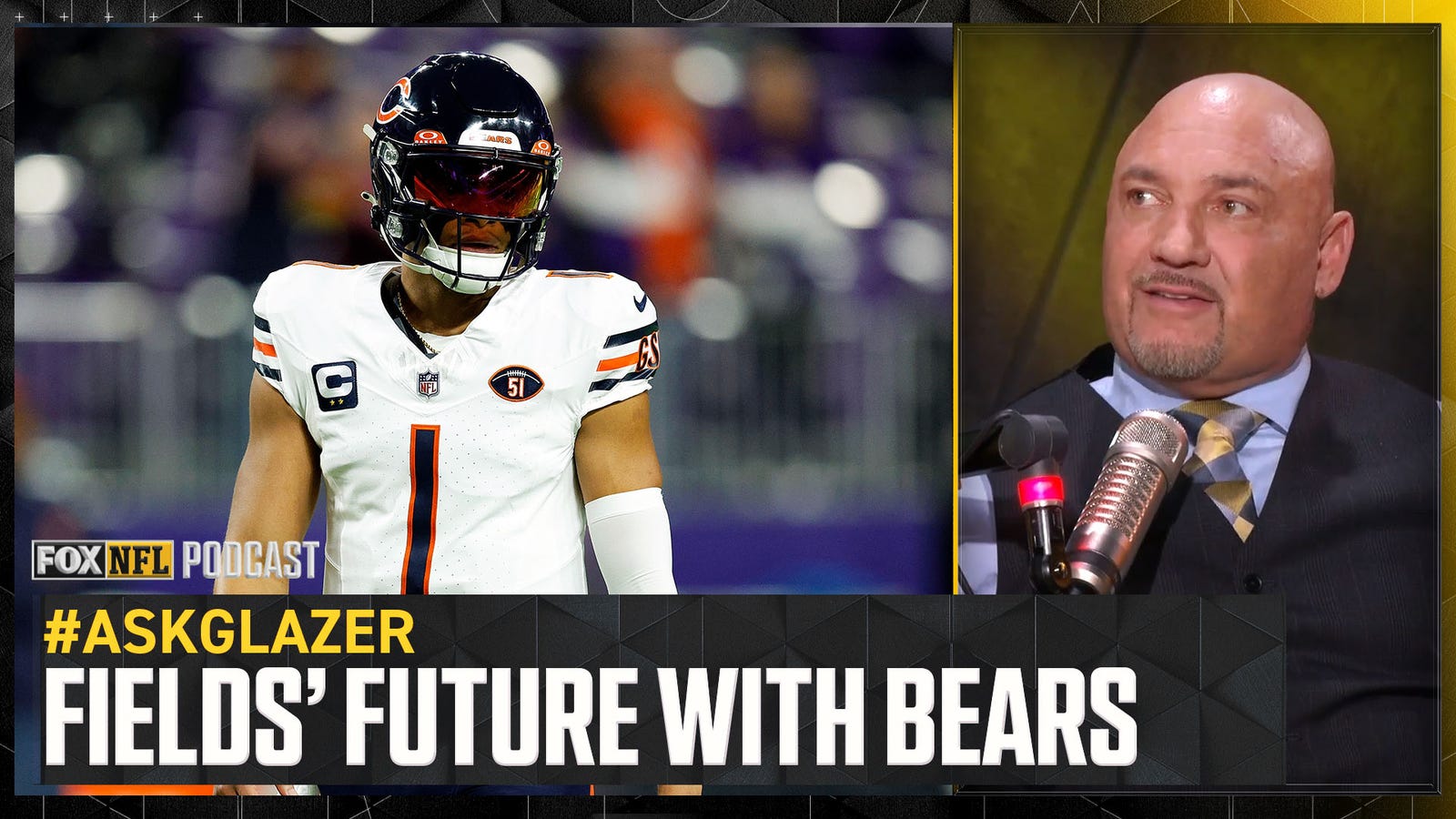
The Justin Fields conundrum: Breaking down the Bears' branching offseason timelines
The Chicago Bears are 5-9 after their last-minute loss to the Cleveland Browns on Sunday. The playoff push that never really was is now out of reach (though they haven't technically been eliminated) so it's time to think about next year.
Chicago has a big decision to make this offseason.
It's one of the most polarizing topics among an NFL fanbase, and really, the national audience given how big a market it affects. The Bears may not carry the attention the Dallas Cowboys do, but their storied franchise and the sprawling Chicago ties around the country make them one of the NFL's most followed teams. Therefore, one of the biggest conversations in the NFL world involves what they do with quarterback Justin Fields.
There are two realistic paths general manager Ryan Poles can take: move on from Fields or keep him on the roster for 2024, implying he's a future face of the franchise. We're going to examine both timelines.
Let's start with establishing where Fields is as a quarterback after 35 total starts and 10 this season.
Through 10 games (Fields missed four due to a thumb injury), Fields has completed 181 of his 295 passing attempts, giving him his highest season-completion rate of 61.4%. That ranks 27th among qualified passers this season. He's thrown for 1976 yards, 14 passing touchdowns and eight interceptions. He's also recorded 488 rushing yards and two rushing touchdowns. Fields' yards per attempt are 5.1, down from 7.1 in 2022. His interception rate of 2.7% ranks 25th in the league.
In his second season under offensive coordinator Luke Getsy, and after the additions of Nate Davis and Darnell Wright to the offensive line, along with wide receiver D.J. Moore and a host of skill-player depth, the expectation was that Fields would make the coveted ‘third-year jump' we've seen out of many players — most prominently Philadelphia's Jalen Hurts. I wrote in September about how that jump, following the same percentage increases (or decreases in the case of interceptions) that Hurts saw in major passing categories between his second and third years, would realistically look like 2,578 passing yards, 21 passing touchdowns and seven interceptions.
That breaks down to an average of 151.6 passing yards, 1.2 touchdowns and 0.4 interceptions per game. Fields is currently averaging 197.6 yards, 1.4 touchdowns and 0.8 interceptions per game. In essence, he's made most of that ‘third-year jump' under Getsy — but is he good enough to bet on long-term?
It's worth noting he's also accounting for 48.8 rushing yards per game.
There's been very fair and valid criticism that the offensive system Getsy and the Bears employ doesn't exploit Fields' skillset enough. It's a rhythm passing system, focused on misdirection that gives the quarterback plenty of options and autonomy. The Bears quickly realized that wasn't working to their favor and throughout the season Getsy has tried, and a lot of times failed, to tailor it more to what Fields does well: run the ball.
The reliance on screens and poorly executed RPO structures have let Chicago down on numerous occasions. The Bears are trying to make Fields a pass-heavy quarterback when they should be developing him the way Greg Roman worked with Lamar Jackson in Baltimore — as a run-first, downfield option who can throw to big receivers.
In a weird way, though, Chicago and Getsy have still actually managed to pad Fields' passing stats.
Through 10 games, Fields' receivers have gained 1,001 yards after the catch. That counts towards Fields' total passing yards. That's right; Fields has passed for just 795 air yards. His average depth of target, which is directly due to the scheme and play call, is the lowest of his career at 7.6 yards. But his receivers are averaging 5.53 yards after the catch, which ranks fifth in the league.
The Bears have just 16 passing plays of over 25 yards, which ranks 28th, according to Stats.com.
The frustrating part is Fields has a great arm. We've seen his arm strength stand out since college. That downfield passing component of his game is being completely underutilized. But is the possibility of unlocking that 35 games into his career enough to keep him around? Is banking on unrealized potential worth the risk of a Daniel Jones-esque situation that the New York Giants are currently dealing with? Especially when the Bears will presumably have their pick of a top quarterback prospect in a rich class at the position this year?
Here are the Bears' choices, and where they could lead.
1a. Pick up Fields' option
A decision on Fields' fifth-year option is due this offseason. This in itself is option 1a.
Say the Bears decide they have seen enough from Fields after his third year in the league and second under Poles and head coach Matt Eberflus. They recognize his potential and decide it's enough to stake their jobs on it, if Eberflus is still employed by the team for 2024 (which is an if). They pick up the fifth-year option, which according to Over the Cap should be somewhere in the range of $25 million in 2025. That is fully guaranteed. The Bears — or a team they trade Fields to — have to pay the QB that money.
The advantage is one more year of Fields under his rookie contract while they surround him with even more talent via the draft and free agency. The Bears would presumably trade out of the first overall spot in the draft thanks to owning the Carolina Panthers' first pick. They would be able to stockpile immediate and future picks, including at least one if not two future first-rounders depending on how far they trade down and with whom.
It would likely still yield two first-round picks in 2024 with a combination of the acquired pick in the trade down and the Bears' actual first pick, which would currently land at No. 5.The overwhelming favorite would be to take Ohio State wide receiver Marvin Harrison Jr. But let's not forget, this isn't a guarantee.
Chicago likely couldn't trade out of the top three if they wanted to be sure they could addHarrison. And while the Ohio State phenom is as sure a thing as we've seen since Calvin Johnson, draft picks by nature are their own risk. The trade down would likely include future capital, including a first-round pick in 2025, which Chicago could use to draft a quarterback should Fields ultimately not work out. But in that scenario, what do they do with Fields? His trade value would be diminished, especially with his fifth-year option attached, and Chicago might have to package first-round picks in 2025 to move up for the quarterback they want. The 2025 QB class also may not be better than this coming year's group.
Alternatively, if Fields plays incrementally better, the Bears would potentially extend him, which would likely cost between $40-50 million per year. That's investing a large chunk of cap space and limiting the ability to sign other top talent.
Players like Eddie Jackson, Teven Jenkins, Khalil Herbert and Jack Sanborn are all set to be free agents in 2025.
This doesn't take into account the fact that many fans are calling for Getsy's, if not Eberflus', job after this current season. Fields, if retained, would be starting over in his third system in Chicago in 2024.
1b. Keep Fields, but don't pick up his fifth-year option
This makes 2024 a real prove-it year for Fields. The Bears could still pass on taking a quarterback in this year's draft in favor of all the aforementioned capital, and really put the pressure on Fields to perform, even if he's starting over in a new system. If Fields doesn't, he's a free agent in 2025 and Chicago somewhat admits defeat on their 2021 first-round pick. They won't gain anything from parting ways with him other than not having to pay out the $25 million and can draft a quarterback in 2025.
If he does perform well, then the Bears would need to extend him a year ahead of schedule and pay out $40-50 million starting in 2025, making Fields $15-25 million more expensive than he would have been on his option.
2. Trade Fields and draft a quarterback
If Fields continues to trend up as the season closes despite Chicago's underwhelming win-loss record, there's the potential for his trade stock to go up. A third-round pick is likely Fields' ceiling currently, according to NFL evaluators I've talked to around the league. According to those same evaluators, a second-right pick isn't realistic. But a top-100 addition in this year's draft would be valuable.
Chicago would then take a quarterback with its first pick, either Caleb Williams or Drake Maye. Even if that QB has many of the same problems Fields had, the clock would be starting over at the most expensive position. The Bears would then have their quarterback on a rookie deal; one who is coming into a great situation,with a solid defense and a top wide receiver in D.J. Moore.
Chicago could also take a receiver like LSU's Malik Nabers with their second first-round pick. They'd have an opportunity at a third-round offensive lineman to help protect their quarterback investment, or maybe packaging picks to move into the second round. The Bears would also have over $60 million in cap space uninhibited by a quarterback contract in the near future to pay for experience at their most-needed positions. It's worth noting they could get a top veteran receiver and offensive lineman for less than $50 million per year combined.
It also wouldn't matter if there was a coaching change, whether at head coach or offensive coordinator. The new quarterback is starting over anyway.
From a business standpoint, the decision is pretty cut and dry. It has a lot less to do with Fields' talent level or what he could be and so much more with team-building for sustainable success that could see Chicago become competitive in 2024 and a real contender in 2025.
The fact that Fields wasn't brought in by Poles matters, too. General managers have faith in their evaluations and not many others', if any. At least if a new quarterback didn't work out, Poles would know it was on his terms rather than his predecessor's.
Is there a risk of Fields going to another team and lighting it up in a new offense that better suits him? Yes, of course. But it will only matter if the new quarterback/team doesn't work out in Chicago.
But imagine if it does.












